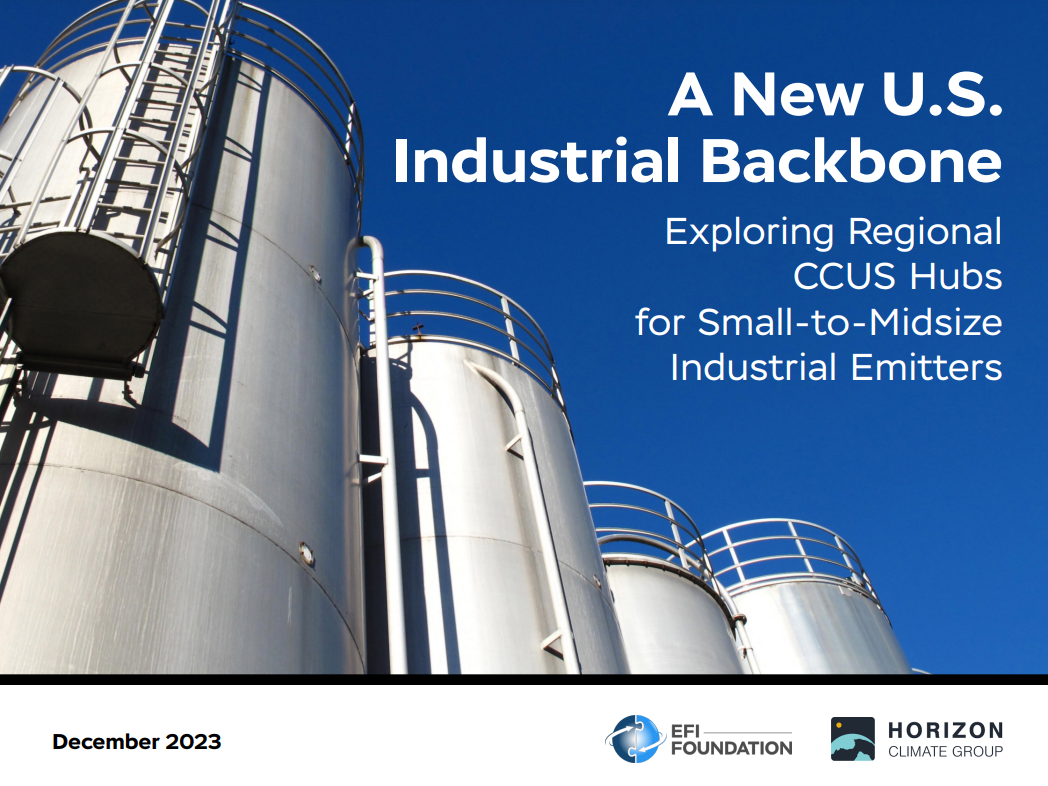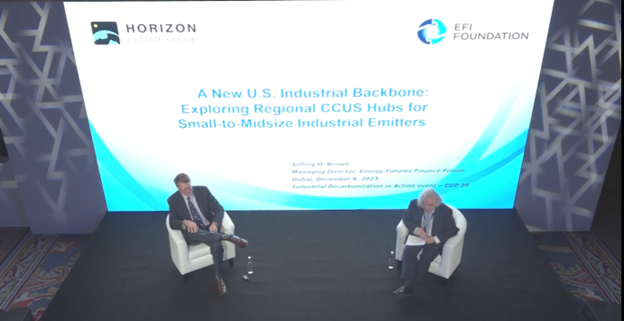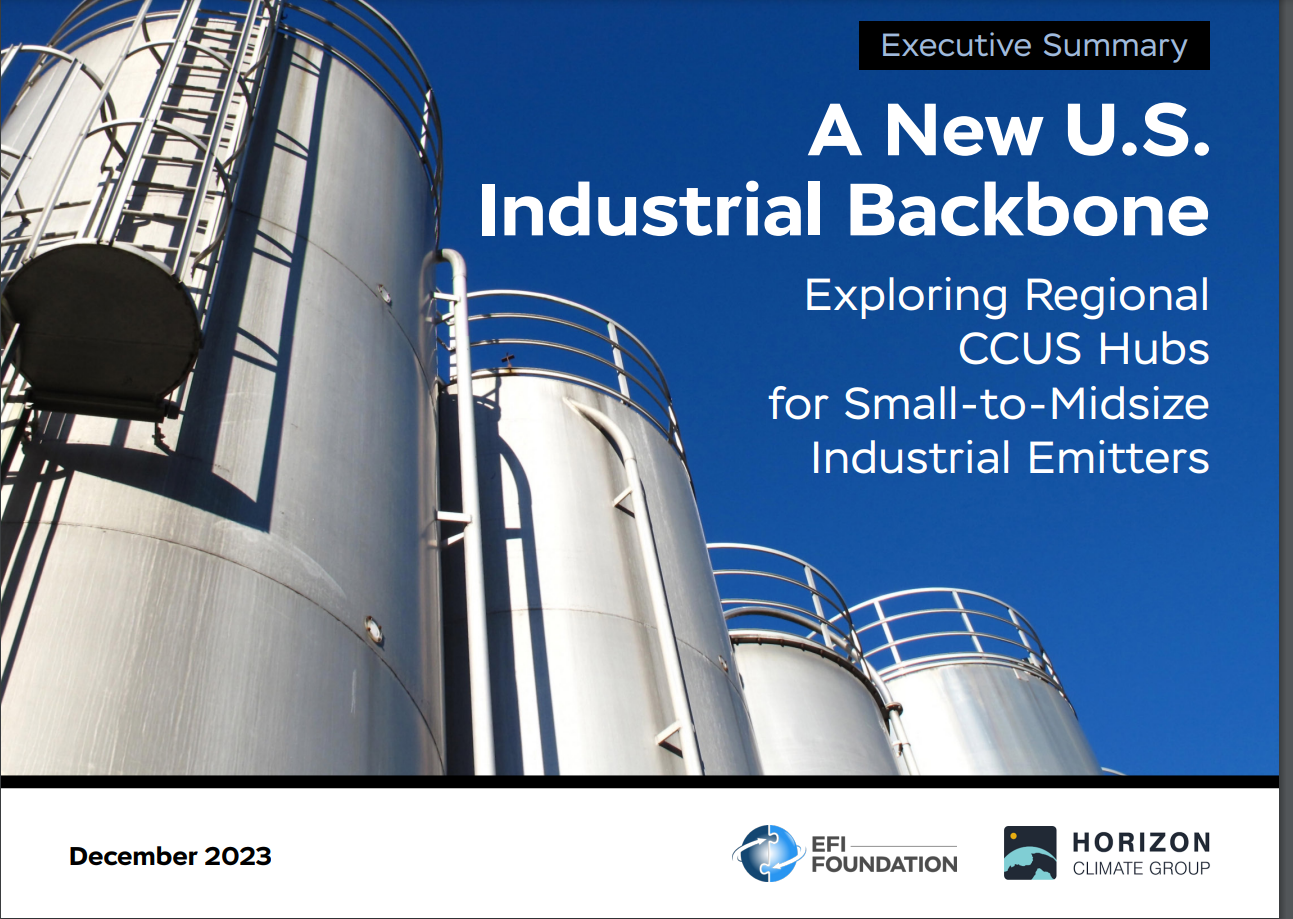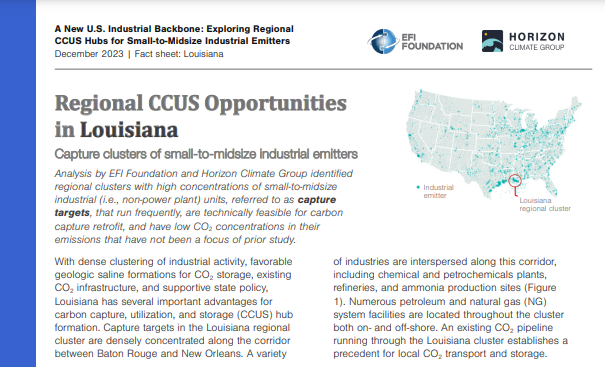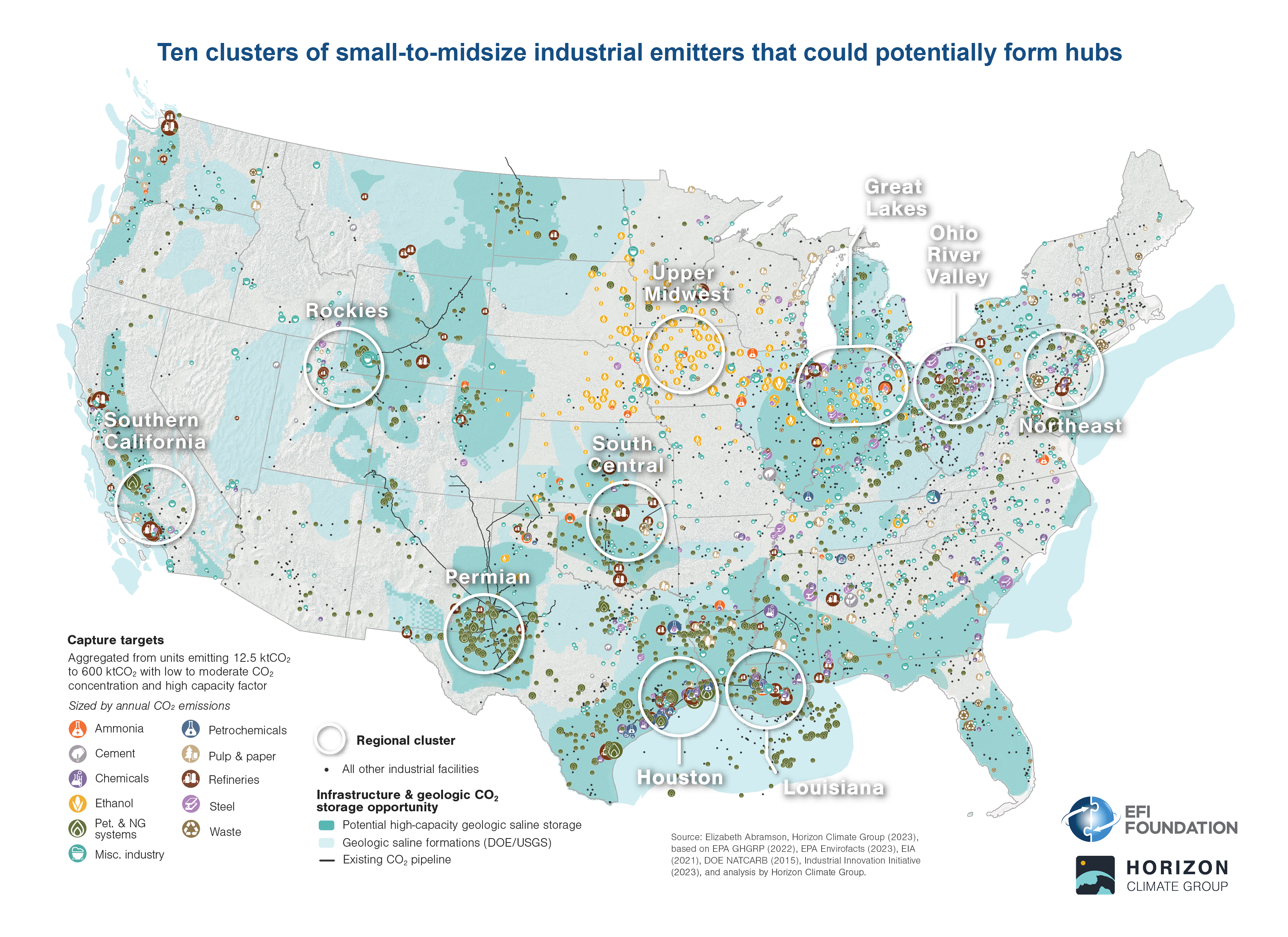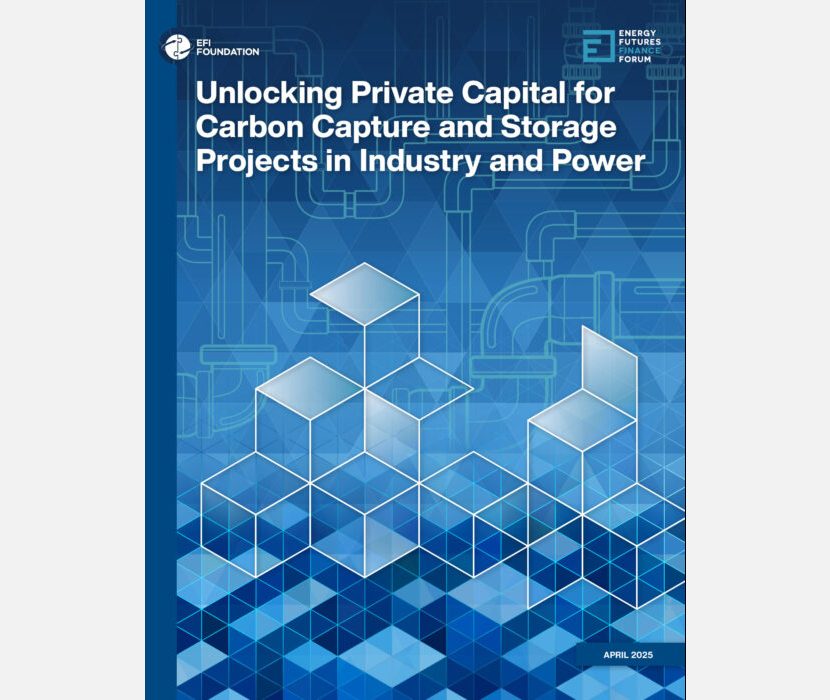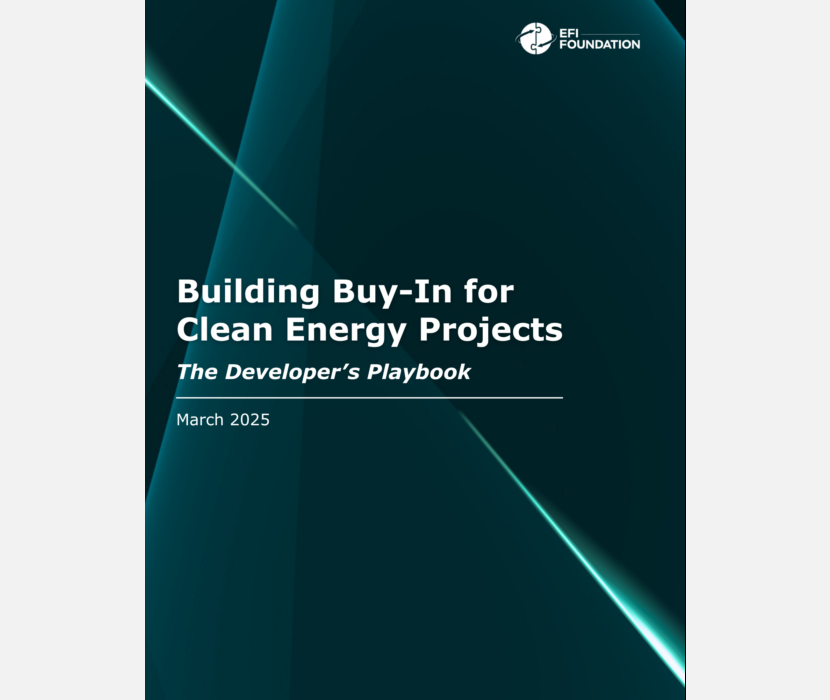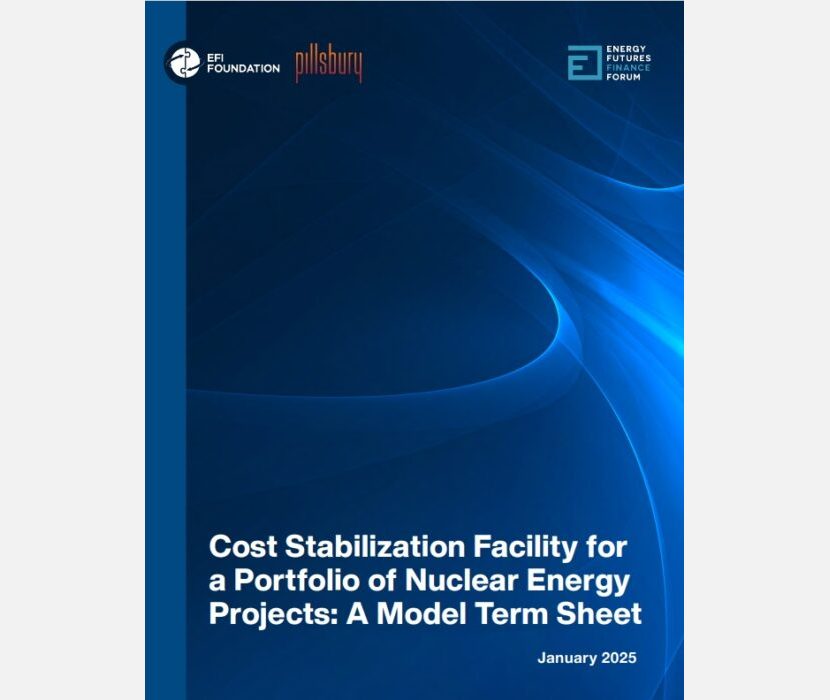A New U.S. Industrial Backbone: Exploring Regional CCUS Hubs for Small-to-Midsize Industrial Emitters (December 2023) is a report focusing on how to reduce industrial emissions of carbon dioxide (CO2) by grouping small and midsize industrial emitters in regional hubs with access to carbon capture, utilization, and storage (CCUS) infrastructure. Horizon Climate Group co-authored the report, providing the work to support the analysis, and Carbon Clean sponsored the report.
“To reach our climate goals, we must go well beyond the power sector and pursue industrial decarbonization and carbon dioxide removal,” said Ernest J. Moniz, CEO and President of the EFI Foundation and former U.S. Secretary of Energy (2013-2017). “Carbon capture, utilization, and storage hubs are pathways to effective industrial decarbonization of small and midsize emitters.”
Previous CCUS studies have tended to focus on the largest emitters with the highest concentrations of carbon dioxide emissions. Small-to-midsize industrial emitters in the United States have not received as much attention, even though they account for 25% of industrial emissions. CCUS can reduce emissions for refining and natural gas processing, hydrogen production, and other facilities. However, deploying CCUS on small-to-midsize industrial facilities can be expected to raise end-to-end costs relative to the unit costs of large facilities, even with current incentives in the Bipartisan Infrastructure Law and the Inflation Reduction Act.
CCUS hubs can allow multiple emitters access to shared CO2 transport and storage operations, offering scale at a lower cost. The report screened data on all U.S. industrial emitters to identify 10 potential regional clusters of small-to-midsize facilities that were within close proximity to form a CCUS hub. The 10 potential clusters include 1,000 facilities with total annual emissions of 111 million metric tons per year. The report selected four of these clusters for more detailed technological characterization. These four clusters alone include more than 700 small-to-midsize units with over 70 million metric tons of annual CO2 emissions.
The report identifies a series of next steps in the formation of CCUS hubs, including further techno-economic assessments for CCUS hub feasibility, prioritizing the establishment of hubs around currently planned large-scale CCUS projects, and coordinating CCUS hub formation with direct air capture and blue hydrogen hubs. The report recommends that the U.S. Department of Energy expand its existing program to provide funding for initial prefeasibility studies of CCUS hub formation for small-to-midsize emitters. The report also recommends modifying the Section 45Q credit to extend transferability of the credit and expand the use of the direct pay option. Finally, the report underscores recommendations from various other studies on the need for permitting reforms for CCUS infrastructure.
Supplemental Material
(Share this post with others.)


